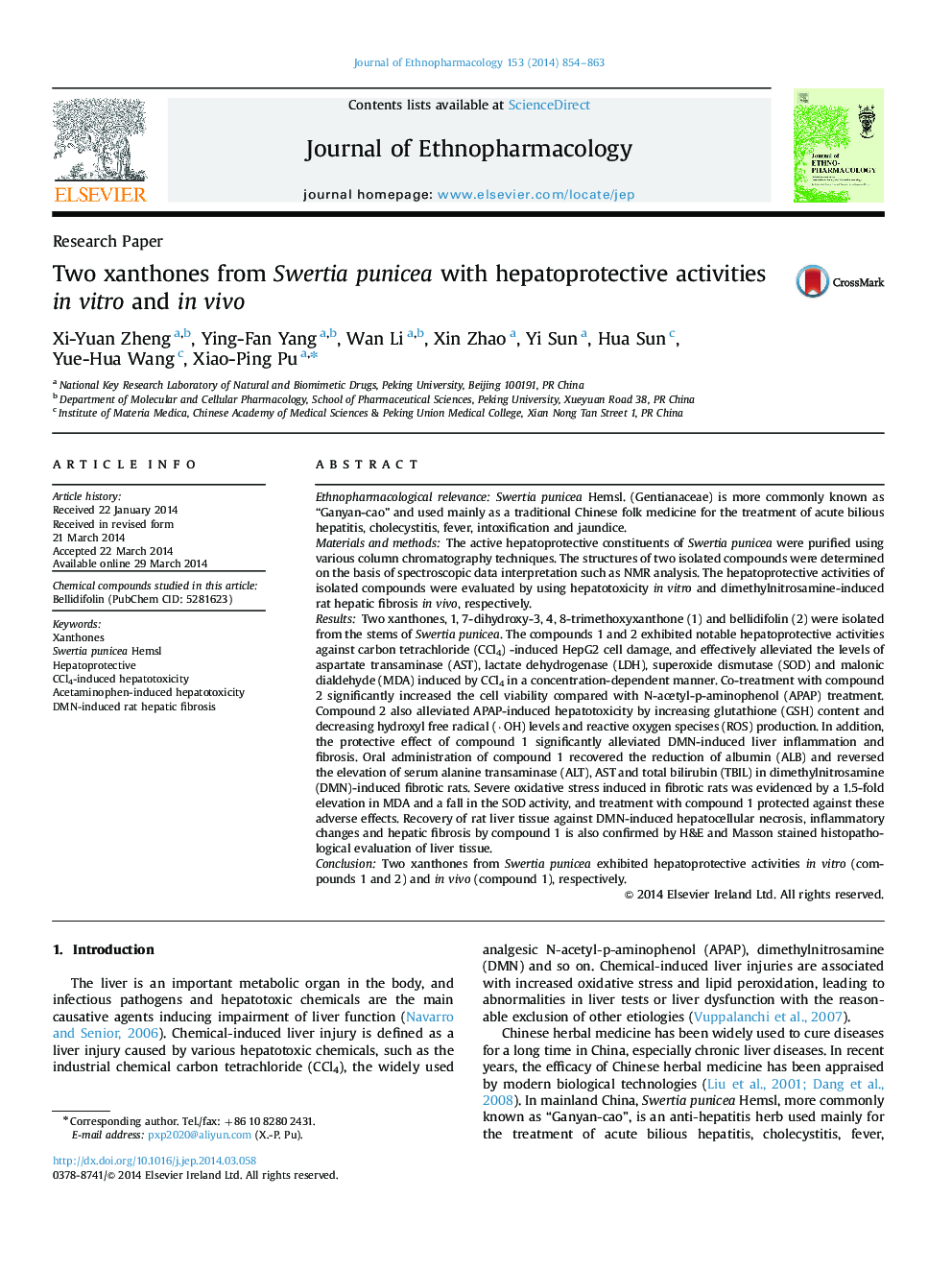| کد مقاله | کد نشریه | سال انتشار | مقاله انگلیسی | نسخه تمام متن |
|---|---|---|---|---|
| 2545115 | 1123934 | 2014 | 10 صفحه PDF | دانلود رایگان |

Ethnopharmacological relevanceSwertia punicea Hemsl. (Gentianaceae) is more commonly known as “Ganyan-cao” and used mainly as a traditional Chinese folk medicine for the treatment of acute bilious hepatitis, cholecystitis, fever, intoxification and jaundice.Materials and methodsThe active hepatoprotective constituents of Swertia punicea were purified using various column chromatography techniques. The structures of two isolated compounds were determined on the basis of spectroscopic data interpretation such as NMR analysis. The hepatoprotective activities of isolated compounds were evaluated by using hepatotoxicity in vitro and dimethylnitrosamine-induced rat hepatic fibrosis in vivo, respectively.ResultsTwo xanthones, 1, 7-dihydroxy-3, 4, 8-trimethoxyxanthone (1) and bellidifolin (2) were isolated from the stems of Swertia punicea. The compounds 1 and 2 exhibited notable hepatoprotective activities against carbon tetrachloride (CCl4) -induced HepG2 cell damage, and effectively alleviated the levels of aspartate transaminase (AST), lactate dehydrogenase (LDH), superoxide dismutase (SOD) and malonic dialdehyde (MDA) induced by CCl4 in a concentration-dependent manner. Co-treatment with compound 2 significantly increased the cell viability compared with N-acetyl-p-aminophenol (APAP) treatment. Compound 2 also alleviated APAP-induced hepatotoxicity by increasing glutathione (GSH) content and decreasing hydroxyl free radical (·OH) levels and reactive oxygen specises (ROS) production. In addition, the protective effect of compound 1 significantly alleviated DMN-induced liver inflammation and fibrosis. Oral administration of compound 1 recovered the reduction of albumin (ALB) and reversed the elevation of serum alanine transaminase (ALT), AST and total bilirubin (TBIL) in dimethylnitrosamine (DMN)-induced fibrotic rats. Severe oxidative stress induced in fibrotic rats was evidenced by a 1.5-fold elevation in MDA and a fall in the SOD activity, and treatment with compound 1 protected against these adverse effects. Recovery of rat liver tissue against DMN-induced hepatocellular necrosis, inflammatory changes and hepatic fibrosis by compound 1 is also confirmed by H&E and Masson stained histopathological evaluation of liver tissue.ConclusionTwo xanthones from Swertia punicea exhibited hepatoprotective activities in vitro (compounds 1 and 2) and in vivo (compound 1), respectively.
Figure optionsDownload high-quality image (98 K)Download as PowerPoint slide
Journal: Journal of Ethnopharmacology - Volume 153, Issue 3, 14 May 2014, Pages 854–863